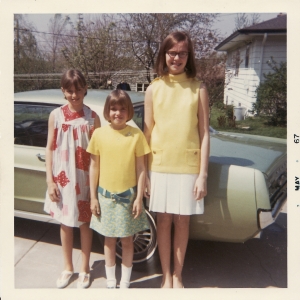It all started at the Copa
February 14, 2013 • 15 Comments • Posted in memoir writing, UncategorizedMarion Karczmar is a mischievous writer who sparkles when she reads her essays for our Monday afternoon memoir class, and I’m excerpting a piece she wrote to celebrate Valentine’s Day today. The essay is about her enduring love for her husband, and it opens with Marion asking herself the age-old question: what does the word “love” really mean?
During the war I worked at a canteen. The soldiers were not much older than I, looking bewildered and afraid. We danced and I let them kiss me. They made me promise to marry them when or if they returned from the war. I agreed. At that rate I would be a female polygamist after D Day. But my well meaning compassion was not the same as love.
Before she was married, Marion worked as an actress in Toronto and New York City. She delighted in applause and good reviews, and in her essay she admits to being “in love with no other than myself.” That all changed after her girlfriend Danielle insisted on a double date with a couple of foreigners who had escaped from the Holocaust. “I had great sympathy for refugees,” she wrote. “But I didn’t see how dating them would advance my career as an actress.”
Marion’s friend persevered, and the next thing you know she and Danielle were at the Copa Cabana with their dates. “Both had something in their hair, I think it’s called Vitalis. In the case of George, sprigs of hair kept escaping from their oily binding and were sticking out.” Marion liked George, especially after she discovered how good he was at tango. “Danielle didn’t complain because she preferred quiet Morton; she spent the evening correcting his English.” George accompanied Marion to her boarding house and made her promise to see him the next day. “So we met again, and then again.”
George followed Marion to Delaware when she accepted a summer stock job there that summer. “He proposed marriage on a crowded beach under a hot sun,” she wrote. “I agreed to think about it.” She eventually said yes, of course. I mean, get serious. Who could resist a stiffly-dressed European who wears Vitalis and dances the tango? From her essay :
I found being with him stimulating, exciting. He was older and more worldly and I was infatuated. As I grew to know him better I began to notice that beneath his bravado and cocky behavior he was really a very decent guy. I found myself liking him very much and then realized I loved him as he did me.
“I won’t say we lived happily ever after, we had our ups and downs like other married couples, we quarreled about this and that,” she admits in her essay. “After all, we came from very different cultures, and we were both temperamental and impatient.” On the other hand, she writes, they “had a lot of good times together with each other, and later, with their children.”
Marion is in her 80s now. Alexander George Karczmar, 95, is a neuroscientist whose academic career culminated with 30 years tenure at Loyola University of Chicago Medical Center. Marion worked in various aspects of theatre throughout her life, and she continued dancing for exercise and fitness — part of Marion’s early acting training in New York had included dance classes with Martha Graham. She eventually traded in her ballet slippers for a yoga mat and started teaching classes in both yoga and meditation.
Marion ends her essay describing the ways growing older has made their differences — and any quick judgments of each other — fade away.
We have become truly good companions. We are open and easy with one another; we don’t make love any more, but the kind of love we have now is really more satisfactory. As Tom Stoppard says, “there is one person who can bring out our humanness,” and I find out that that person is my husband. I believe I have at last discovered the definition of love. I can feel it and I know it’s the real thing. My days are brighter.




